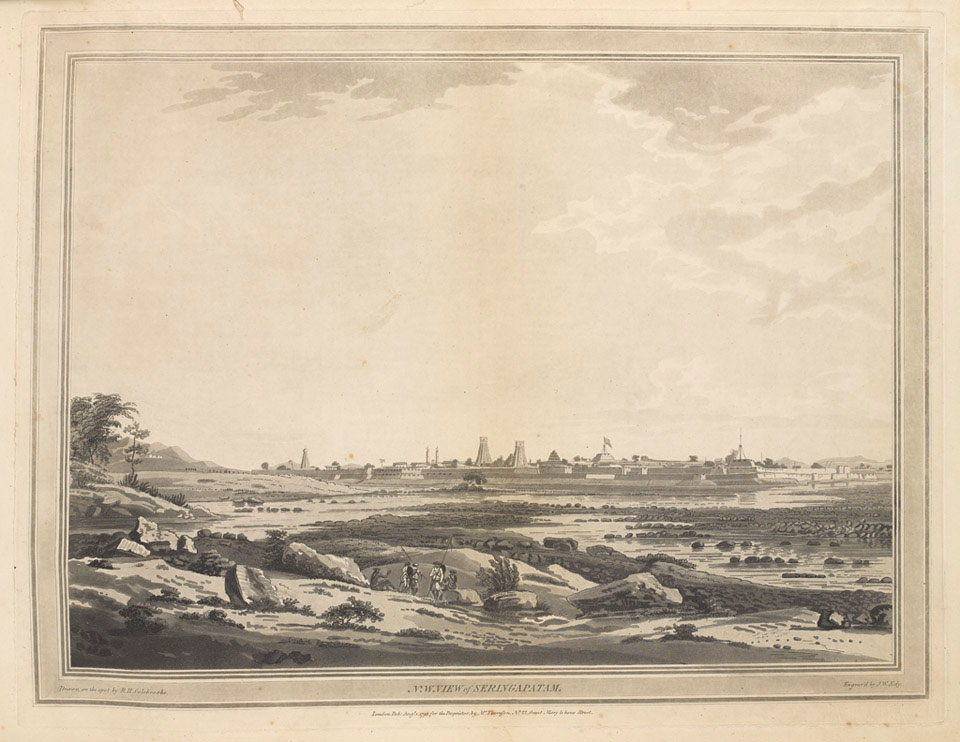
Online Collection
« Prev - 1 of 1 results - Next »
'N.W. View of Seringapatam', 1791 (c)
Aquatint by John William Edy, after Lieutenant-Colonel Robert Hyde Colebrooke (1762-1808). From a series, 'Twelve Views of Places in The Kingdom of Mysore, The Country of Tippoo Sultan', published by Thompson, 22 Great Marylebone Street, London, 1 October 1793.
Colebrooke served in the 3rd Mysore War (1790-1792), surveying the route of the return march from Madras to Calcutta, 1791-1792. As part of this work he made drawings of Seringapatam, Bangalore and the topography of Mysore.
Seringapatam (Srirangapatnam) was the fortified capital of Tipu Sultan (1750-1799), ruler of Mysore, in southern India. In 1791, during the 3rd Mysore War (1790-1792), a British force invaded Mysore, commanded by the Governor-General of India, Lieutenant-General Charles, 1st Marquess Cornwallis (1738-1805). Tipu was driven back to his stronghold at Seringapatam and although insufficient supplies forced the British to retire, the following year, Cornwallis negotiated a peace treaty. The Sultan ceded a large part of his dominions to the British.
Born in Switzerland, Robert Colebrook arrived in India on 10 December 1778, on the East Indiaman 'Gatton'. He rose from the rank of ensign to become a lieutenant-colonel, serving with the 13th Bengal Native Infantry, 20th Bengal Native Infantry and the 22nd Bengal Native Infantry. During his military career. He served in the Survey Department from 1785, becoming Surveyor General of Bengal in 1788. He died of dysentery at Bhagulpur on 21 September 1808.
NAM Accession Number
NAM. 1971-02-33-503-12
Copyright/Ownership
National Army Museum, Out of Copyright
Location
National Army Museum, Study collection
Object URL
https://collection.nam.ac.uk/detail.php?acc=1971-02-33-503-12

